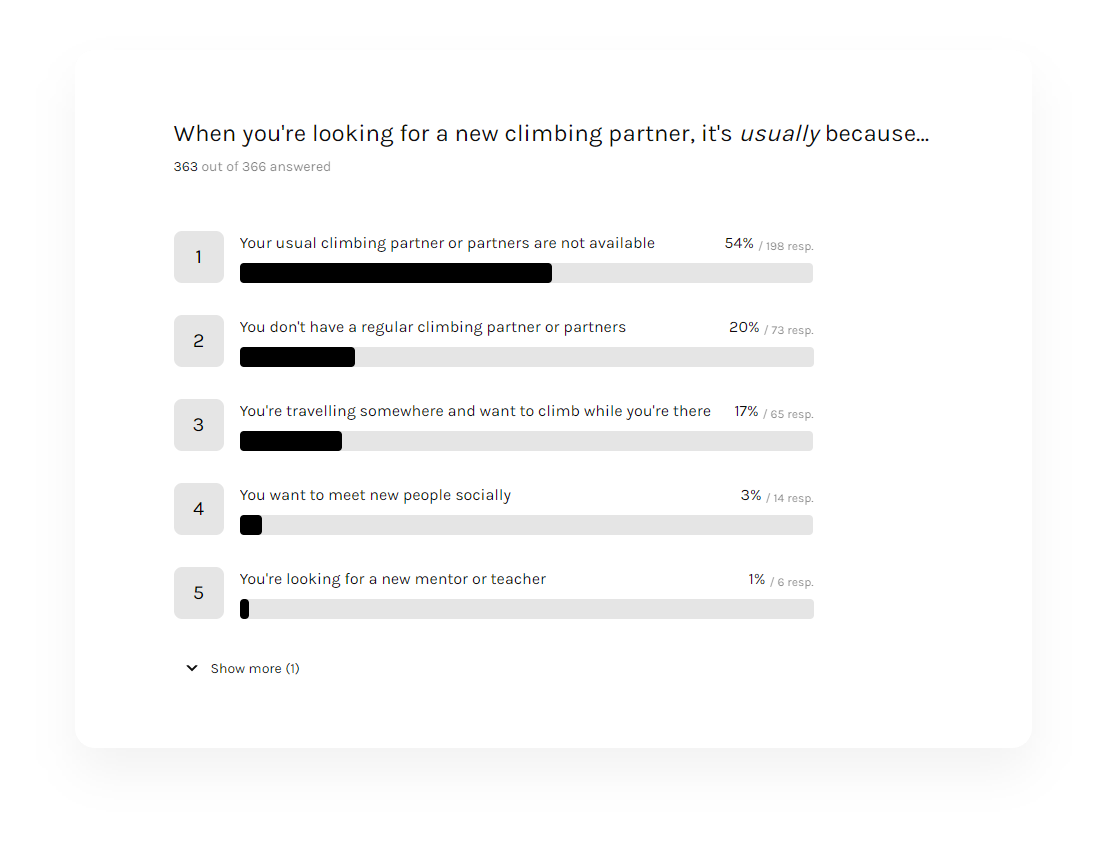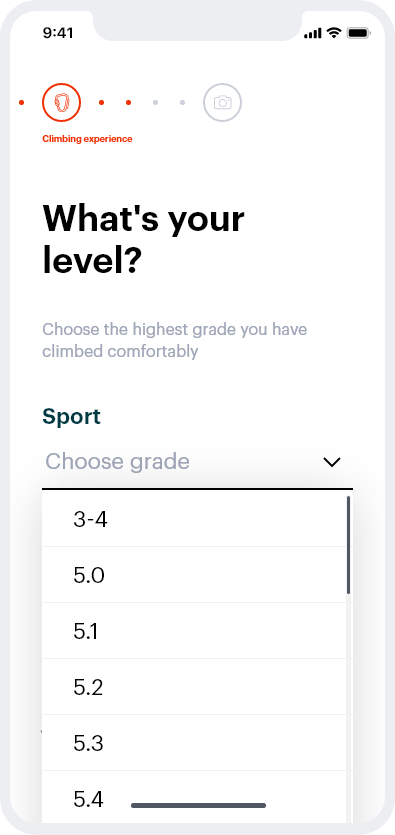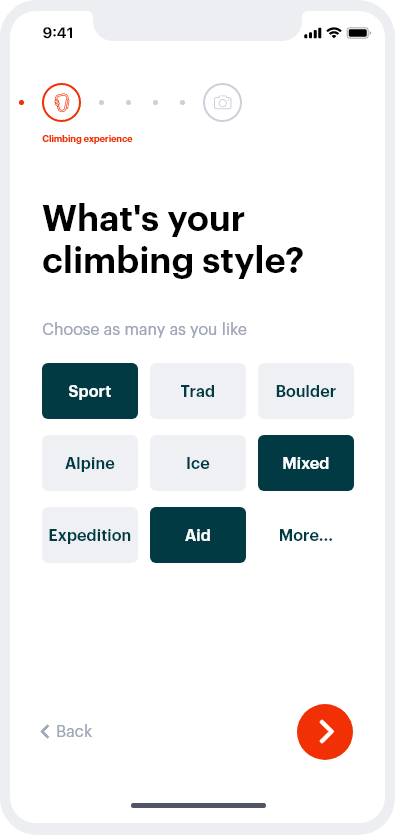Climbing, whether on local crags or on the tallest peaks, place unique demands on those who do it. A successful climbing partnership required many different many different ingredients: shared values, similar levels of technical skill, and a well-aligned approach to risk to name but a few.
Add to this the fact that the climbing community is scattered across the globe, and separated into a wide range of different sub-types of climbing (e.g. some people go climbing indoors once a month, while others go on long expeditions to the Himalayas), and one can start to understand why the task of finding like-minded reliable climbing partners is trick one.
Helping to connect members of the climbing communities from across the globe, Peakr provides and app-based platform which allows users to browse a database of climbers who are 'in the market' for partners. With the ability to filter based on certain requirements and personal preferences, as well as algorithmic ranking that is used to suggest other users who might be a good fit for you, Peakr makes it easier to find a partner for any climbing project.

The climbing community has over 35 million members worldwide and is expanding at a rate of 15-20% every year—a trend which looks set to continue with the inclusion of climbing in the 2020 Olympics.
According to the Climbing Wall Association (CWA), in 2017 it was estimated that climbing industry revenue topped $618 million—it is estimated that the indoor climbing gym industry will be worth $1 billion by 2021. Climbing can be an expensive sport—on average, climbers spend over $1200 more than the average consumer of outdoor gear.
In the US in 2019, 65% of all climbers were between the ages of 18 and 35. In terms of gender, climbing remains a largely male dominated activity, with people identifying as male making up nearly 60% of all climbers worldwide. Despite this, the number of climbers of other genders is steadily increasing year on year.
Many environmental organizations have been formed to safeguard the environment and in the process put down certain guidelines for rock climbers. As such, climbers have increasingly become “a force in safeguarding wild landscapes and advocating for recreational access to public lands”.
There are several products out there that solve some or part of the problem when it comes to looking for climbing partners, though so far there has been no“one-size-fits-all” solution on the market.

A free iOS and Android app to help you find a climbing partner. The app appears to be on hiatus as of June2018.

A website that serves as a guide book for climbing routes across the world, used mainly by climbers in the US. Along with an active forum, the site also features a Partner Finder tool.

UK Climbing is the UK’s answer to Mountain Project featuring many of the same tools: discussion forms, climbing route directories, articles and gear reviews – though the partner finder tool is not quite as robust.

An iOS and Android app that is currently in development (October 2019). The app aims to connect people around any and all outdoor sports, from surfing to mountaineering.
As part of our research we conducted a survey of 366 potential users who are active in online climbing communities. The survey was created in Typeform and featured a mix of demographic, behavioral and attitudinal questions. We received a lot of rich data in the answers to open ended
questions, as well as the multiple choice and short answer questions. 135 out of 366 said they were open to being contacted for a 30 minute follow up interview and provided their email addresses.

There were several factors cited as being barriers or pain points in the process of finding a new climbing partners. Here are the top 7 barriers that we found in our survey results, interviews and literature review:



The goal was to remove complexity from the partner finding process, allowing the Peakr to do the hard work of finding a good match for you. As such, the app was designed to collect as much information about you as possible during the on-boarding phase, to then suggest algorithmic-ally relevant partners for you.





Adobe XD allowed us to create a mid-fidelity prototype, featuring the key onboarding and partner matching functionalities. This was crucial for user testing, in which in several climbers would test and evaluate the look, feel and functionality of the app.
We chose to conduct series of moderated remote tests to gather the clear and specific feedback needed at this stage. This allowed us to gain deep, qualitative insights from actual climbers. Participants were given a scenario and asked to complete a series of tasks while their screens and voices were recorded.


Users were generally able to completely all the given tasks fairly quickly and easily with few errors, however, the qualitative feedback we received was extremely rich and there was several takeaways that forced us to rethink the design.
The most important discoveries we made in usability testing were related to users' varying levels of knowledge when it comes to climbing terms and concepts. Here are a few examples...
During testing, most users expressed a certain degree of uncertainty when selecting their climbing style. They were able to select what climbing style they felt matched their's best, but the fact that they didn't recognize some of the styles made them lose some confidence in their choices. The ability to see more details about each climbing style could help users feel more confident in their choice.


This was a big one. Climbing grades are highly subjective. During testing, most users where extremely hesitant to pick a single value for their climbing grades. Climbing performance depends on so many factors, and users wanted to make sure they were representing themselves accurately on their profile. After testing, I determined that perhaps the ability to select a range of grades, rather than a singular value, would be more appropriate.
I realized during testing that your average casual climber, who climbs mostly for leisure, has limited knowledge when it comes to the "technical" language of climbing compared to more avid climbers. While most climbers knew the actual value of their grade (e.g. "5.4" or "V6") they didn't know the name of the scale they were using (e.g. "Yosemite system"). It was clear this particular part of the experience needed to be re-evaluated to either offer an example for each grading system, or use terminology that matched that of the users (e.g. "V-scale" instead of "Hueco")



Peakr is a young company, and it's still early days in the design and development process. We took a dive into the deep end and are learning things as we go.
Openness and communication are crucial components of any successful climbing partnership; climbing is not about bravado or posturing—and neither is Peakr.
We want to help people to find partners with whom they can do amazing, adventurous things—which is why we believe in creating thoughtful, impactful solutions for the community.
Work on Peakr is ongoing as the company, app and ideas continue to evolve and grow. We're excited for what's ahead and look forward to seeing what 2020 has in store for us.
